Using the PathMeasure
Program
The PathMeasure
program allows you to select from three directions for each of the
segments in your path: straight forward and one-wheeled turns left and
right. If you want to measure different kinds of turns, such as
pivot turns where the wheels turn opposite directions, use the
MoveMeasure program instead.
The PathMeasure program can be used as follows:
 |
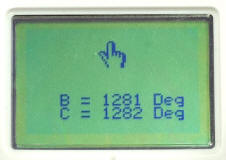 |
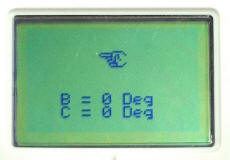 |
|
1. At the beginning of
each segment, select the direction using the NXT buttons:
Left Arrow: Left Turn
Enter Button: Straight Forward
Right Arrow: Right Turn
The rotation sensors for the B and C motors will be reset to
zero. |
2. Press and hold the
touch sensor on the remote control to make the robot move in the
direction indicated. You can press the sensor more than
once, and you can also adjust the wheel positions by hand at the
end of the segment if needed. The degrees travelled by
each motor are displayed on the screen. |
3. To begin a new segment,
press the NXT button for the new direction as in step 1, and the
rotation sensors will be reset back to zero to begin the next
measurement. |
Modifying
the PathMeasure Program to Match your Robot
| As written, the
PathMeasure program
assumes that the motors should be run in the "forward" direction
to make the robot move forward, and that motor B is on the left
of the robot and motor C is on the right (like the settings on
the configuration panel for the Move block). If your robot
needs different settings, you will need to modify the program.
To modify the PathMeasure program, find the
3-tabbed Switch in the lower sequence of the program pictured to
the right. Click on the three tabs to show the Motor and
Move blocks used for the three motion directions (left,
straight, right) and change them as necessary. |
|
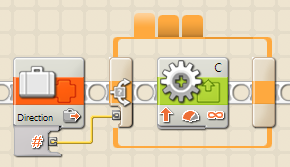 |
Using the MoveMeasure Program
The MoveMeasure
program is a more complex alternative to the
PathMeasure program that
allows you to select from eight directions for each of the segments in
your path. The MoveMeasure program is used as follows:
| Left Arrow Button: |
Select Previous Motion Type |
| Right Arrow Button: |
Select Next Motion Type |
| Enter Button: |
Reset Rotation Sensors to Zero
|
| Press and Hold Touch Sensor: |
Drive in the Selected Direction |
As with the PathMeasure program, you
can press the touch sensor more than once to complete a motion if
desired, and you can also adjust the wheel positions by hand at the
end of the motion if desired.
Using the arrow buttons to select the motion type
will rotate continuously through a cycle of eight different
directions (starting at 4 = Straight Forward) as follows:
| |
Motion |
Motor B |
Motor C |
| 1 |
Left Reverse Turn |
Backward |
Stop |
| 2 |
Left Pivot Turn |
Backward |
Forward |
| 3 |
Left one-wheeled Turn |
Stop |
Forward |
| 4 |
Straight Forward |
Forward |
Forward |
| 5 |
Right one-wheeled Turn |
Forward |
Stop |
| 6 |
Right Pivot Turn |
Forward |
Backward |
| 7 |
Right Reverse Turn |
Stop |
Backward |
| 8 |
Straight Reverse |
Backward |
Backward |
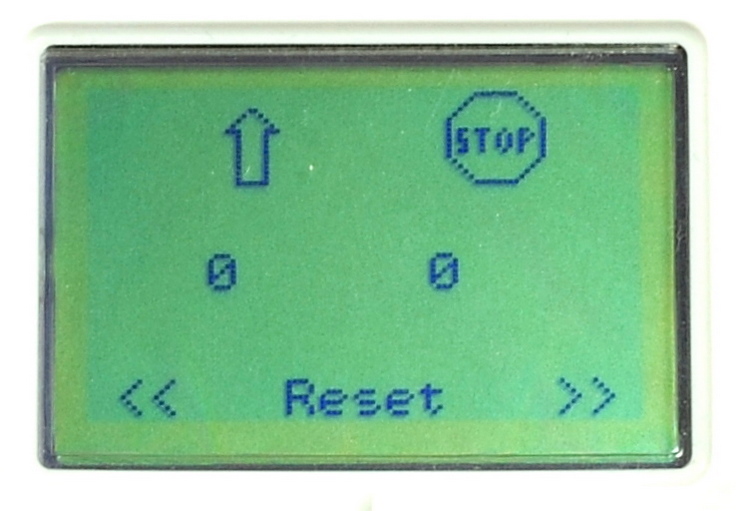 |
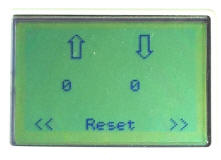 |
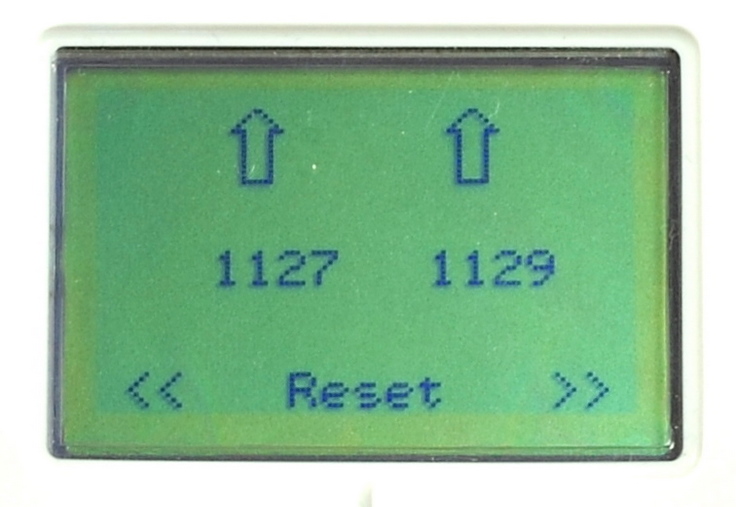 |
|
Two icons on the top of the
screen display the selected motion type by indicating which
direction the motor on that side of the robot will move
(forward, backward, or stop). |
Rotation measurements in degrees
are displayed for the left and right motors. |
Modifying
the MoveMeasure Program to Match your Robot
| As written, the
MoveMeasure program
assumes that the motors should be run in the "forward" direction
to make the robot move forward, and that motor B is on the left
of the robot and motor C is on the right (like the settings on
the configuration panel for the Move block). If your robot
needs different settings, you will need to modify the
MoveMeasure program.
To modify the MoveMeasure program, find the
8-tabbed Switch in the lower sequence of the program pictured to
the right. Click on the tabs to show the Motor and Move
blocks used for the eight motion directions and change them as
necessary (see the table of motions above). |
|
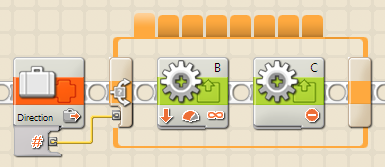 |
|
